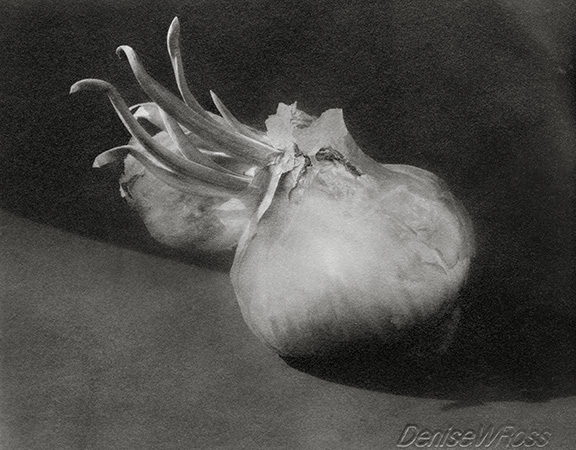8. Handmade Silver Gelatin Emulsions—Developing-Out Papers |


Left: Contact print of 4"x 5" dry plate negative on chloride paper, Arches Bright White HP watercolor paper |
|
Photographers have used silver gelatin papers since the 1880s. That's a LOT of history. If you can make the four basic types of developing-out paper (otherwise known as plain ol' traditional B&W paper) you have access to a wealth of history, photographic literature, and creative options. The four basic types are chloride contact printing paper ("gaslight" paper); bromide paper, primarily used today for enlargements, but also to contact print dense negatives; and papers made with any ratio of chloride and bromide. Any of the paper types can contain iodide, the third halide used in photographic emulsions, albeit in very small amounts. Within that basic framework are all the options available with watercolor paper choice, including weight, texture, and color, inherent emulsion tone (often influenced by developer choice), and supplemental toning and/or coloring. The web tutorials on this site and my Blurb book contain the basic information needed to make printing paper. My new book is exclusively about paper. The links to both books are on the home page. |

Left: Contact print of 6.5"x 8.5" dry plate negative on chlorobromide paper, selenium-toned, Rives BFK watercolor paper |

|
| < Printing-Out Paper (POP) Creative Potential > |